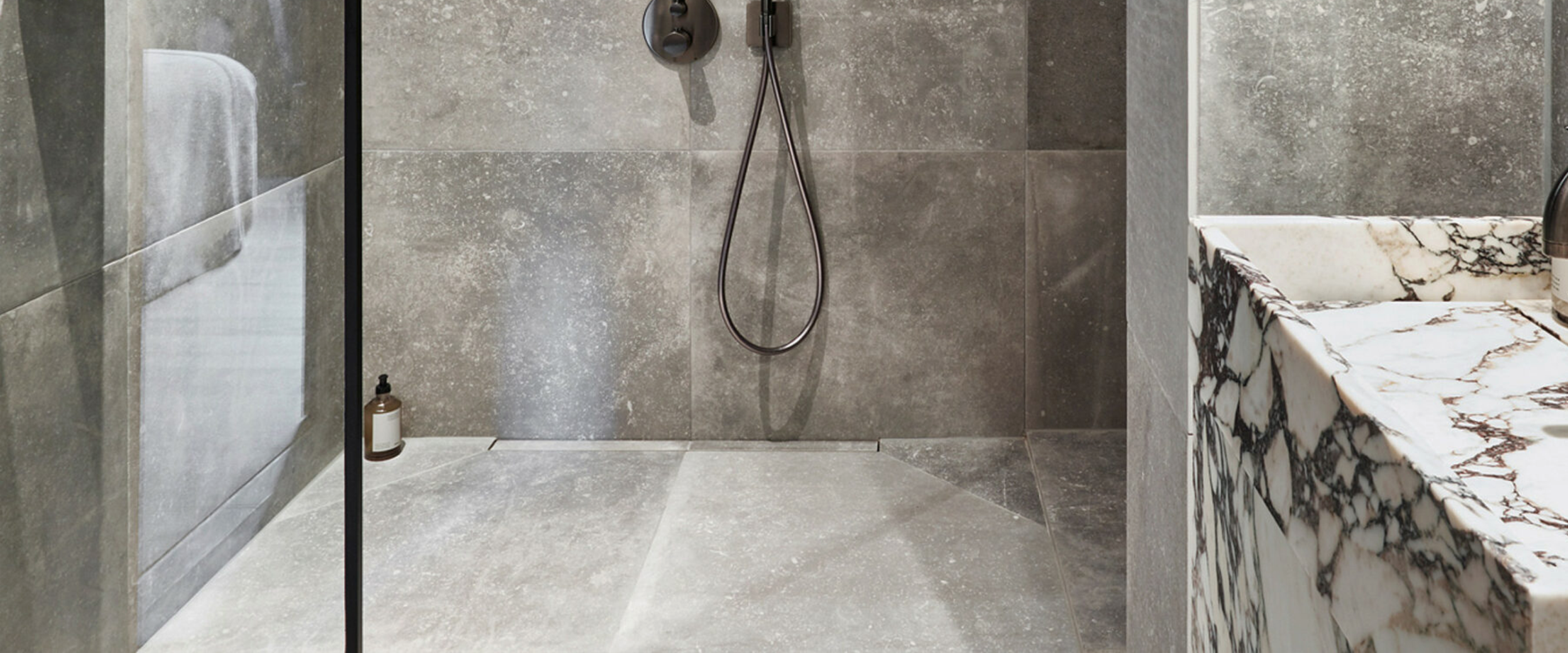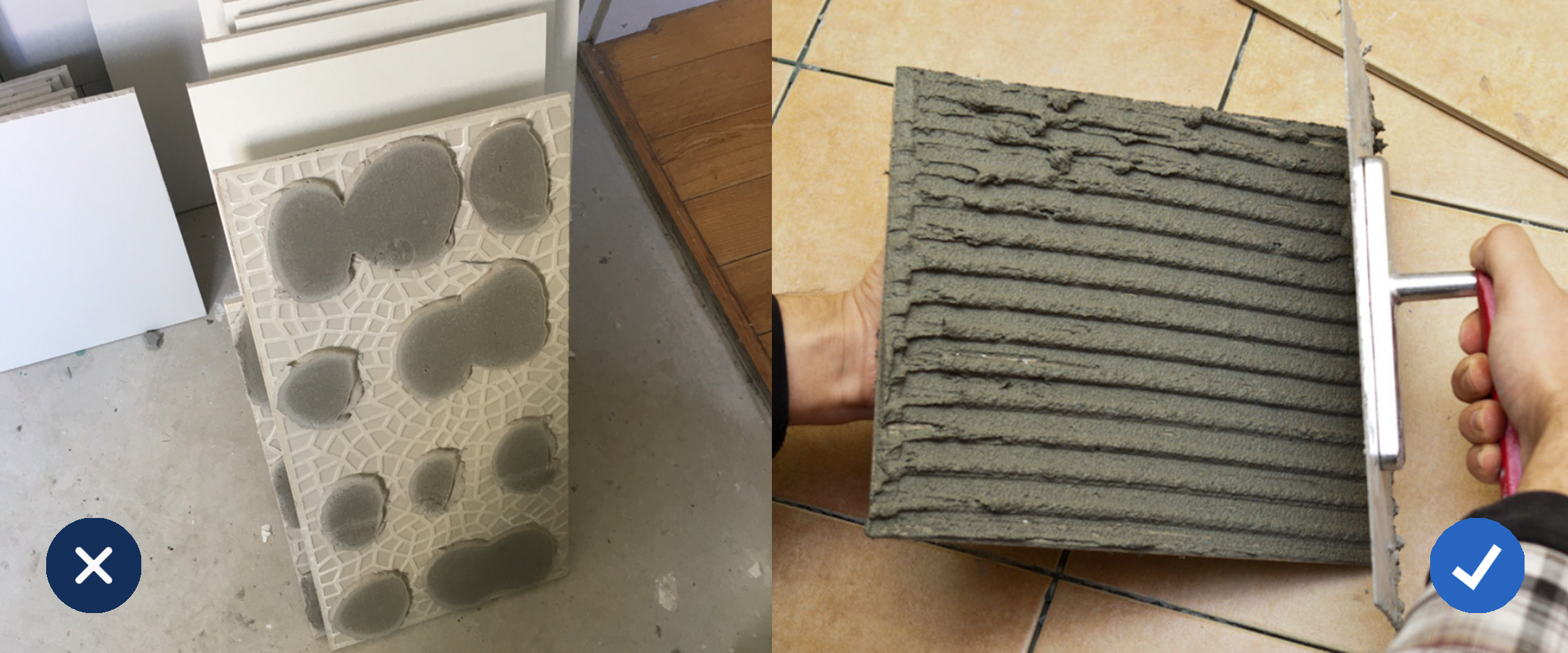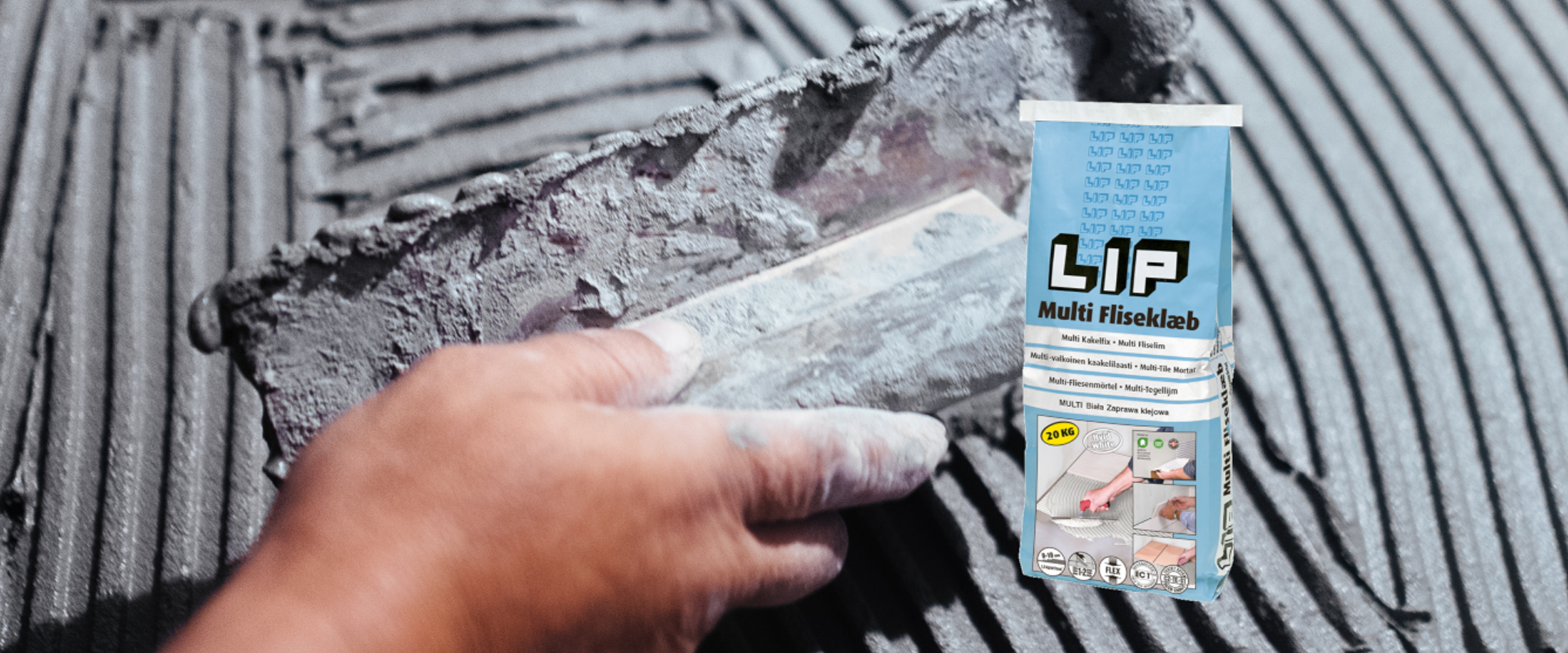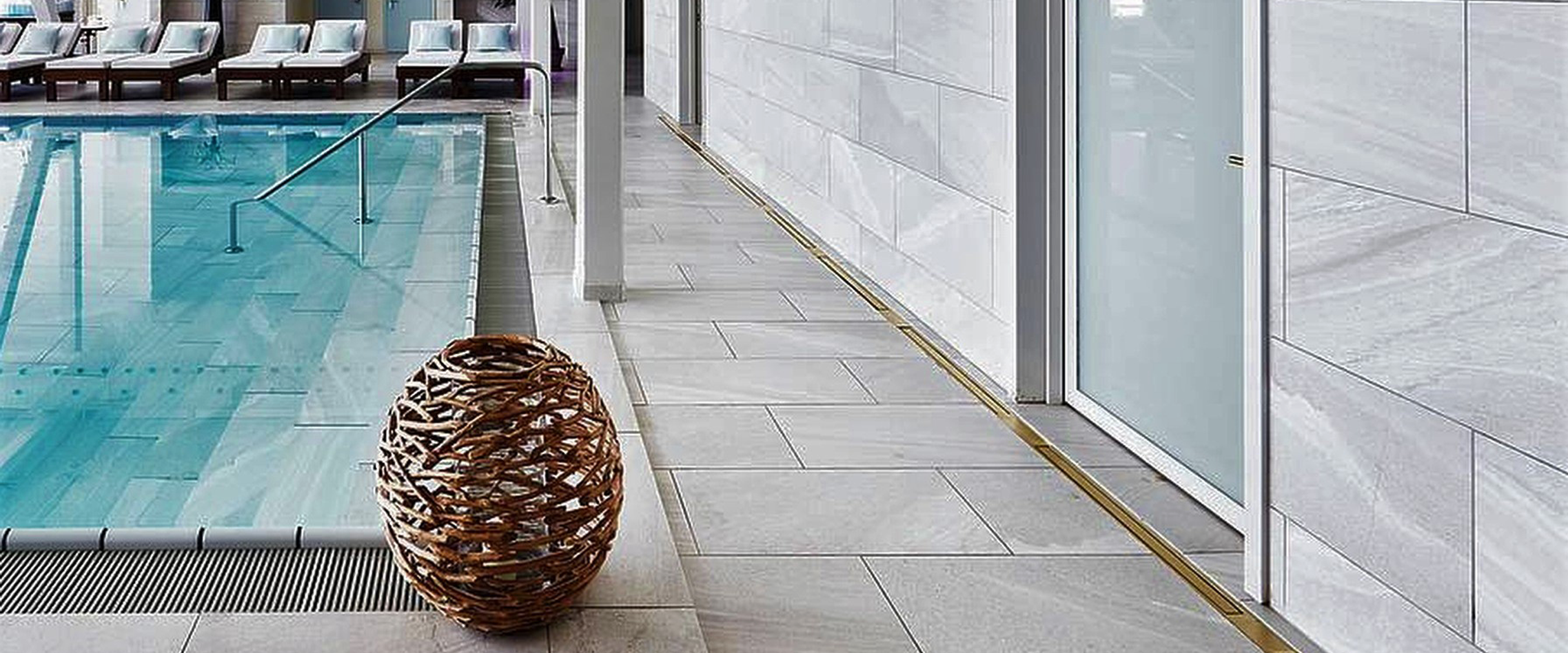Post by WM Wetroom Materials
Wet room installation is something of a specialist skill. While there is no rocket science involved, it does require an appreciation of what must be done correctly and also what can go wrong, which is often picked up through experience. A correctly installed wetroom will last a lifetime, so making sure each stage of the process is done right is important in minimising any future costly issues.
Tiles are a popular choice of flooring for wetrooms; not only do they enhance the aesthetics of your bathroom, they are easy to maintain, provide practicality and can be installed on any floor build up. Tiles work well with your chosen drainage and waterproofing solutions, and in fact can even be incorporated into the gully design, like with our SharpDrain Square tile insert & panel drain. With so many styles, materials and textures to choose from, tiles are the best option for your wetroom.
Tiling a wetroom is one of the final stages of installation, but this isn’t a stage to cut corners – there are several factors you need to consider before laying tiles on the walls and floors. The most common cause of tiling issues in wet rooms is simply inexperience on the part of the installer.
Want some inspiration for your wet room tiles?
Wet Room Bathroom Tiling Trends 2023/24

Tiling a wet room improperly can lead to various issues and problems, both in terms of aesthetics and functionality. A wet room is a space that’s specifically designed to handle water, such as bathrooms and shower areas. It’s important that the floor of these rooms are watertight. When tiles are installed improperly, it can cause loads of issues within the residence:
You may experience some of the following if you’re wet room tiles are installed improperly:
Not only does poor tiling look unattractive, it can be practically unsuitable, too. The cost of fixing a tiling disaster can be expensive because it usually means that the entire wet room installation is suspect and may need to be completely uninstalled and reinstalled.
The total installation costs can end up being roughly three times the original estimate; never mind the knock-on effect of the installation schedule for the builder or contractor and possible complaints to the architect who is blameless.
The ‘must do’ category is all about planning, preparation and using the correct tanking membrane and adhesive, and the application of these products prior to laying the tiles.
A beautiful tiled finish will always be the perfect choice for any wet room – both walls and floor. The best tiles for a wet room depend on the style of wetroom you envisage, but you also need to keep in mind the suitability of the tiles for the job. For example, the tile selection must be compatible with the drainage style selected.
Additionally, in areas prone to wetness, safety is paramount. Non-slip tiles are specifically designed for wet environments and feature textured surfaces to reduce slipperiness. These tiles provide peace of mind in shower areas and other high-moisture zones.
To ensure you make an informed choice, let’s explore various types of wet room tiles and factors to consider when deciding which is the best fit for your needs.
*We don’t recommend gloss ceramic tiles for wet room floors as they are a slipping hazard*
When choosing the right wet room tiles for your space, consider the following factors:
Budget: Determine how much you’re willing to spend on tiles and installation. Some materials, like natural stone, can be more expensive than ceramics or vinyl.
Aesthetics: Choose a tile style, colour, and pattern that matches your design preferences and complements the overall look of your wet room.
Durability: Consider the tile’s ability to withstand water exposure, wear and tear, and cleaning chemicals. Porcelain and ceramic tiles are typically very durable.
Maintenance: Think about how easy it is to clean and maintain the tiles. Smaller tiles with more grout lines may require more effort to clean than larger tiles. Vinyl required significantly less maintenance than ceramic or stone.
Safety: For safety, especially in open shower areas, prioritise tiles with non-slip surfaces or add non-slip treatments to the tiles.
Installation: Depending on your DIY skills, construction budget, and the complexity of your wet room, some tile types may be easier to install than others.
Wet room floors require a 100% bed of adhesive; do not use the ‘dot and dab’ system. Small dabs at tile corners and centres does not suffice, as it will allow water to ingress beneath the tiles and will eventually cause problems.

Source: howtospecialist.com
It is also important to make sure that you use a good quality, flexible tile adhesive. The tile adhesive is important as it needs to be non-solvent and compatible with the membrane. A high-grade flexible adhesive is highly recommended
Use the LIP Wet Room Tile Adhesive – this specially formulated tile adhesive is designed to not degrade when submerged in water making it perfect for wet rooms. It is suitable for all tile types recommended for your wet room and is compatible with underfloor heating.

Minimise tile cuts by careful placement of drainage grills – ideally plan the locations in advance so that they match well with the size and type of tile that has been selected. This will ensure minimal wastage and save money on the total cost of tiles.
Wet rooms are obviously very much as the name announces. When tiles get wet, they can become slippy underfoot. Consider your type of user, will wet tiles cause a hazard for those using the wetroom? Use slip-proof tiles if people with reduced mobility, children or elderly people, will be using the wet room. Or, just use them anyway to be safe!
It is crucial to ensure no tile or other wet room components can penetrate the waterproofing membrane. Doing so will avoid leaks, which can damage the structural aspects of the property, causing dampness and rot.
View more information on wet room installation over on our installation guide resources.
The Tile Association Standard (BS5385) is a good source of advice on tiling wet locations.

Try our Wetroom Installation Kit: composed of the key materials which are required for wet room foundation installations, providing you compatibility with our wet room kit and drains.
Our installation teams are trained in Denmark by the suppliers to ensure that every aspect of wet room installation is carried out to the highest professional standards. Our technical installation support team are on hand to provide advice and support throughout all installations.
Backing surfaces for tiling should;
When Tiling;
Grouting should be:
Gypsum plaster should not be used where;
Benefits Of Secondary Drains In Bathrooms & Wet Rooms
14th August 2018
My client bought a range of Wet Room Unislope Systems from our local retailer, Bathworks. We struggled to find anyone to come to site and take responsibility for the waterproofing until we came across WM | Wetroom Materials. They were willing to stand over their tanking system and more than helpful throughout all stages of the installation from site survey and room preparation to installation. A 10 Year no leak fully insured warranty gave me the confidence that we were dealing with a professional organisation. I would highly recommend these guys and will certainly be using them going forward.
Steven Quinlan | Director | Citius Limited
I have honestly found, WM | Wetroom Materials to be an easy and reliable company to work with. Whether it be a one wet room residential project, apartment block or a gym; they ensure there are no installation problems and we don’t have to worry about leaks. They take care of the specification and advising us on correct build ups and preparation. On a recent project we were able to buy their Unislope System from our bathroom show room retailer and they subsequently came to site to tank out the bathrooms. It was a time sensitive job and The Wet Room lads worked through the evening and into the weekend to ensure we completed the project on time. I have no hesitation in recommending WM, they are a pleasure to deal with.
Noel Geraghty | Director/Founder | NGS Mechanical Services
In Bright Designs, we understand the importance of specifying a reliable waterproofing system for bathrooms. We have worked on a number of projects with WM | Wetroom Materials over the years and I can honestly say that their waterproofing installation service offers complete peace of mind for us and our clients. The WM Team are there throughout all stages of the project from site survey and specification to installation. More importantly they also give us a 10 year no leak guarantee. I also like the fact that they will handle communication with the client and contractors in terms of delivering a high-quality installation which allows me the head space to focus on other aspects of the build."
Alan Burns | Director/Co-founder | Bright Designs. B Arch, B Sc Arch, MRIAI.